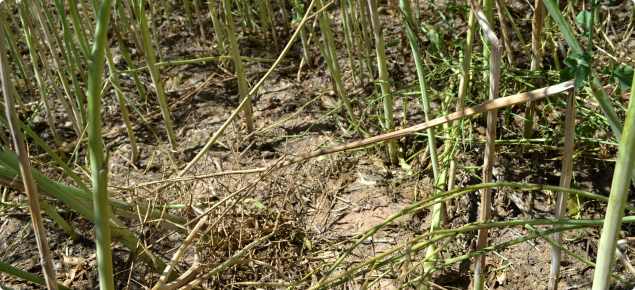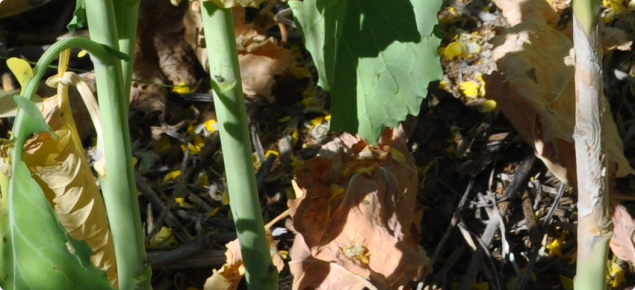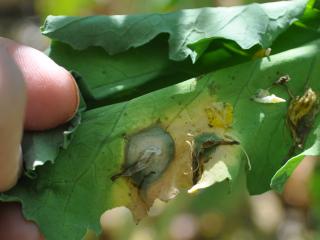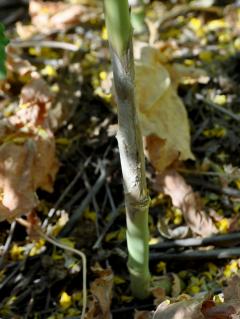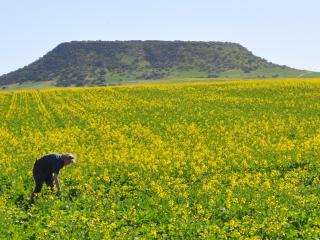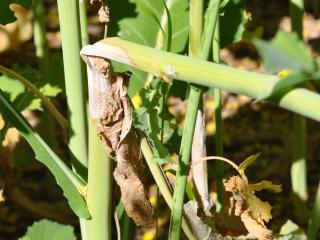Background
Sclerotinia stem rot has become one of the major problems affecting canola crops in recent years, particularly in the Northern region of Western Australia.
There is great demand from industry for further information to be gathered on potential yield loss and also risk of yield loss occurring.
For successful management of sclerotinia stem rot, in most years it is critical to target fungicides at early stage of bloom (20-30%), but optimal timing can vary depending on the season.
In 2013, for example, when infection was delayed due to dry June and then followed by a particularly wet spring, late fungicide application, at or even past 50% bloom gave a good yield response.
There is a need for growers to be flexible with fungicide application depending on the season.
With the aid of a sclerotinia forecasting model that is currently being constructed we hope to be able to estimate the risk of sclerotinia in a given year and predict the best time of fungicide application that will reduce yield loss.
This involves considering air temperature, soil temperature, rainfall and flowering stage.
Aims
- To compare fungicide application at the ‘standard’ recommended timing with a flexible timing approach based on epidemiology/model disease risk forecasting for minimising yield loss from sclerotinia stem rot in canola.
- To gather yield loss due to sclerotinia data.
Trial details
Similar trials were conducted at four locations in the northern agricultural region.
Arrino trial
| Property | Gary Cosgrove, Arrino |
|---|---|
| Crop/variety | Canola - 404 |
| Treatments |
|
| Replicates | Four |
Arrino results
Disease was not observed at the site so the trial was discontinued.
Strawberry trial
| Property | Daniel Michael, Strawberry (Mingenew) |
|---|---|
| Crop/variety | Canola |
| Treatments |
|
| Replicates | Four |
Strawberry results
Stem infection has been observed at the site since August and appears to be more common in the nil treatments. A thorough disease assessment has been done in September. Disease observations and yield results will be provided when they are available.
East Chapman trial
| Property | EF Smart and Co, East Chapman |
|---|---|
| Crop/variety | Canola - 404 |
| Treatments |
|
| Replicates | Four |
East Chapman results
Leaf infection was present from July and stem infection has been observed at the site since August and is more common in the nil treatments. A thorough disease assessment has been done in September. Disease observations and yield results will be provided when they are available.
Ellendale trial
| Property | Anthony Hollins, Ellendale |
|---|---|
| Crop/variety | Canola - Yr23 |
| Treatments |
|
| Replicates | Four |
Ellendale results
A thorough disease assessment has been done in September, only minor levels of stem infection were observed at the site. Disease observations and yield results will be provided when they are available.
Acknowledgements
This trial is part of the GRDC funded project UM00051 National canola pathogen program including new molecular knowledge, pathogen evolution and control techniques.

